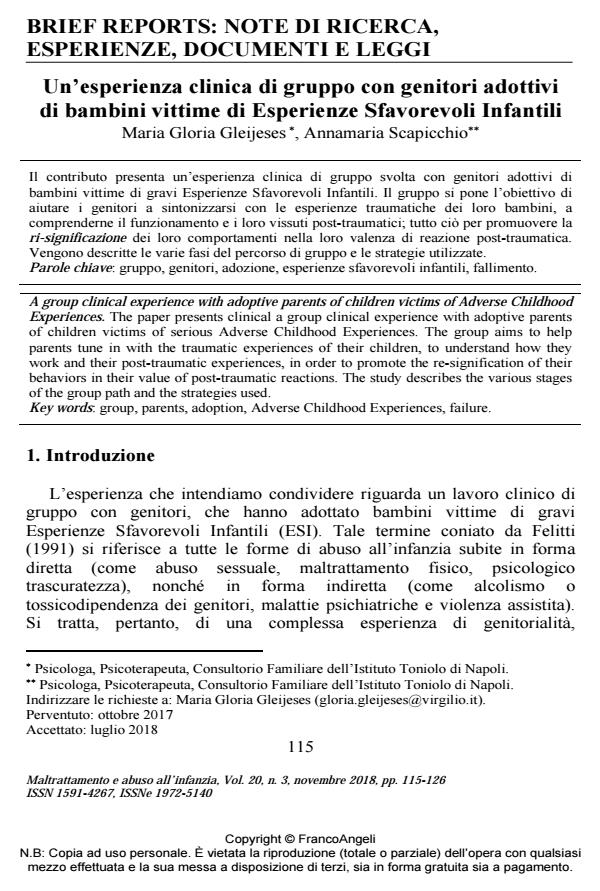A group clinical experience with adoptive parents of children victims of Adverse Childhood Experiences.
Journal title MALTRATTAMENTO E ABUSO ALL’INFANZIA
Author/s Maria Gloria Gleijeses, Annamaria Scapicchio
Publishing Year 2018 Issue 2018/3
Language Italian Pages 12 P. 115-126 File size 197 KB
DOI 10.3280/MAL2018-003007
DOI is like a bar code for intellectual property: to have more infomation
click here
Below, you can see the article first page
If you want to buy this article in PDF format, you can do it, following the instructions to buy download credits

FrancoAngeli is member of Publishers International Linking Association, Inc (PILA), a not-for-profit association which run the CrossRef service enabling links to and from online scholarly content.
The paper presents clinical a group clinical experience with adoptive parents of children victims of serious Adverse Childhood Experiences. The group aims to help parents tune in with the traumatic experiences of their children, to understand how they work and their post-traumatic experiences, in order to promote the re-signification of their behaviors in their value of post-traumatic reactions. The study describes the various stages of the group path and the strategies used.
Keywords: Group, parents, adoption, Adverse Childhood Experiences, failure.
Maria Gloria Gleijeses, Annamaria Scapicchio, Un’esperienza clinica di gruppo con genitori adottivi di bambini vittime di Esperienze Sfavorevoli Infantili in "MALTRATTAMENTO E ABUSO ALL’INFANZIA" 3/2018, pp 115-126, DOI: 10.3280/MAL2018-003007